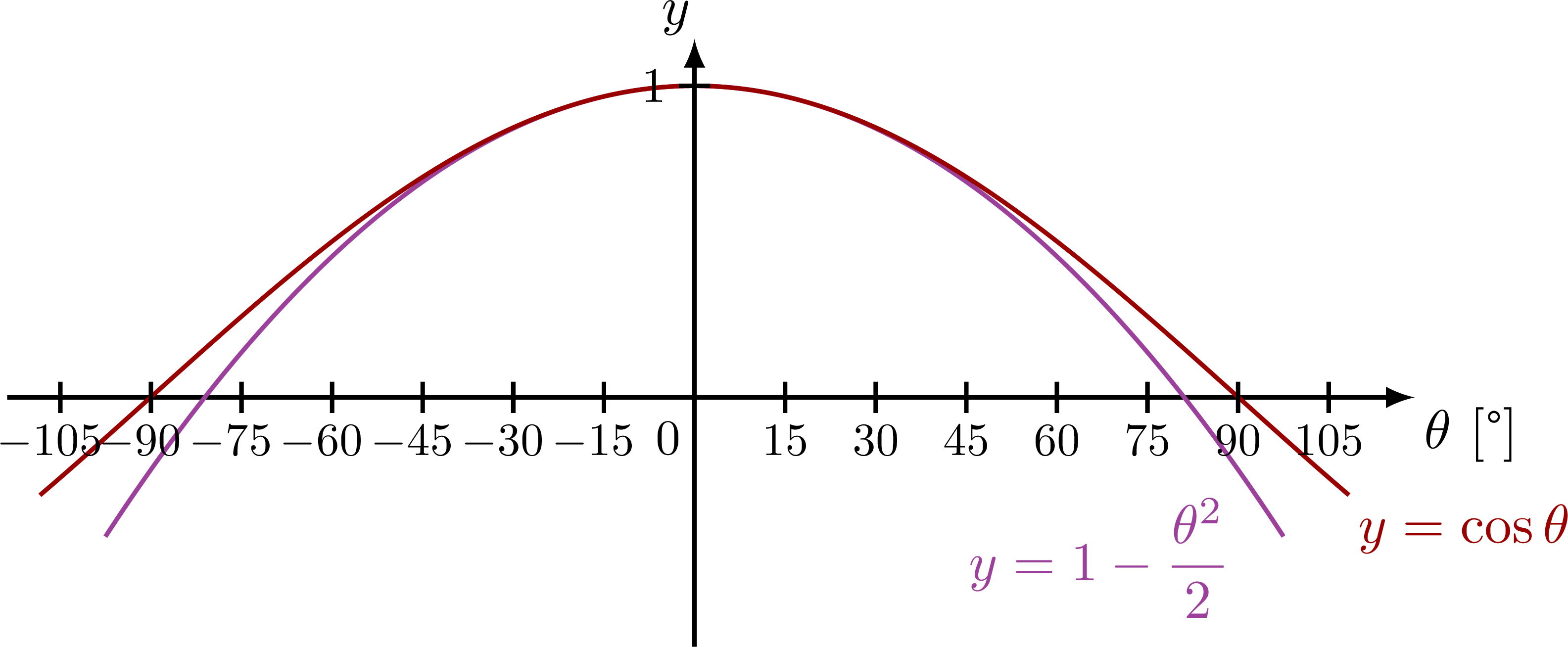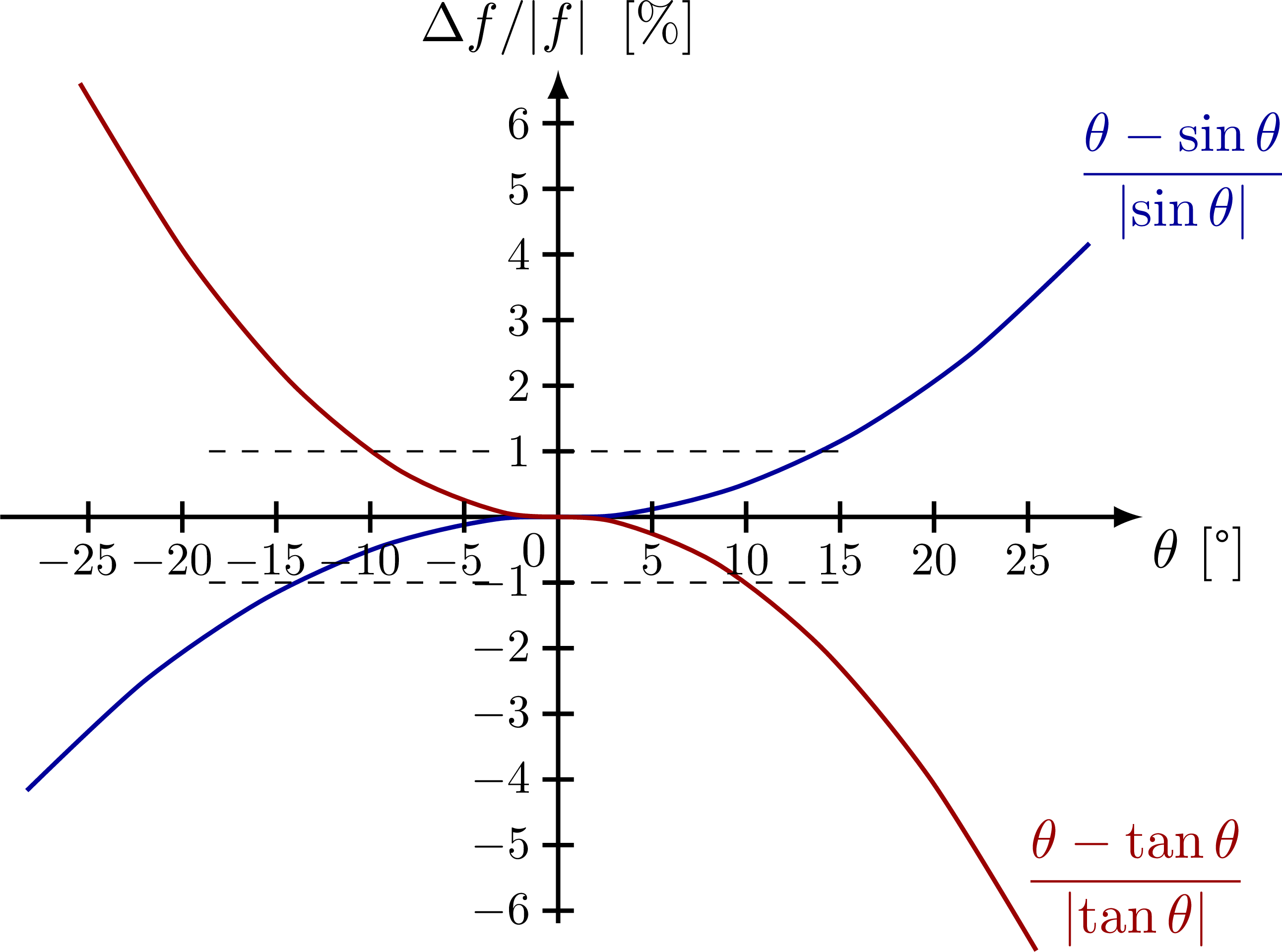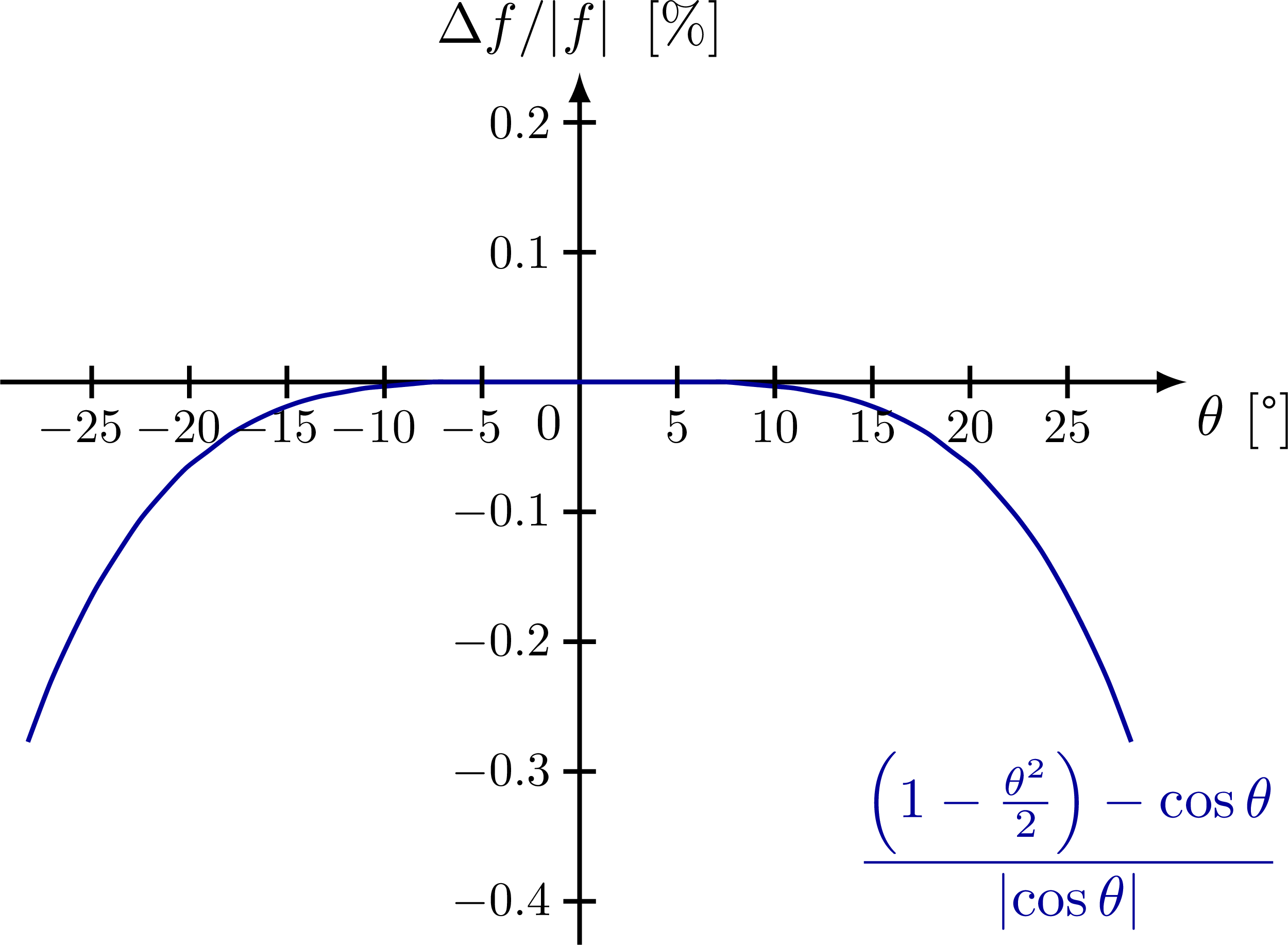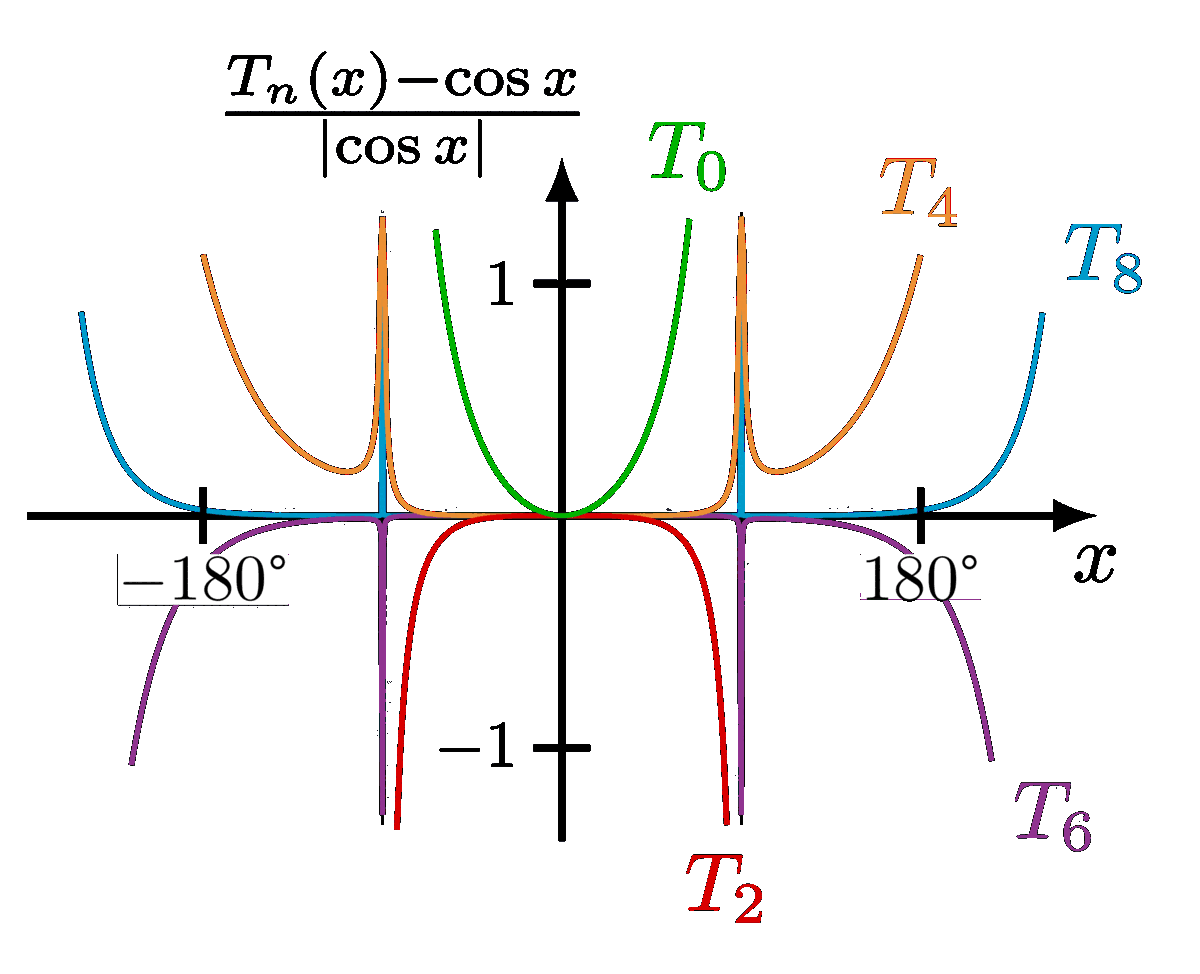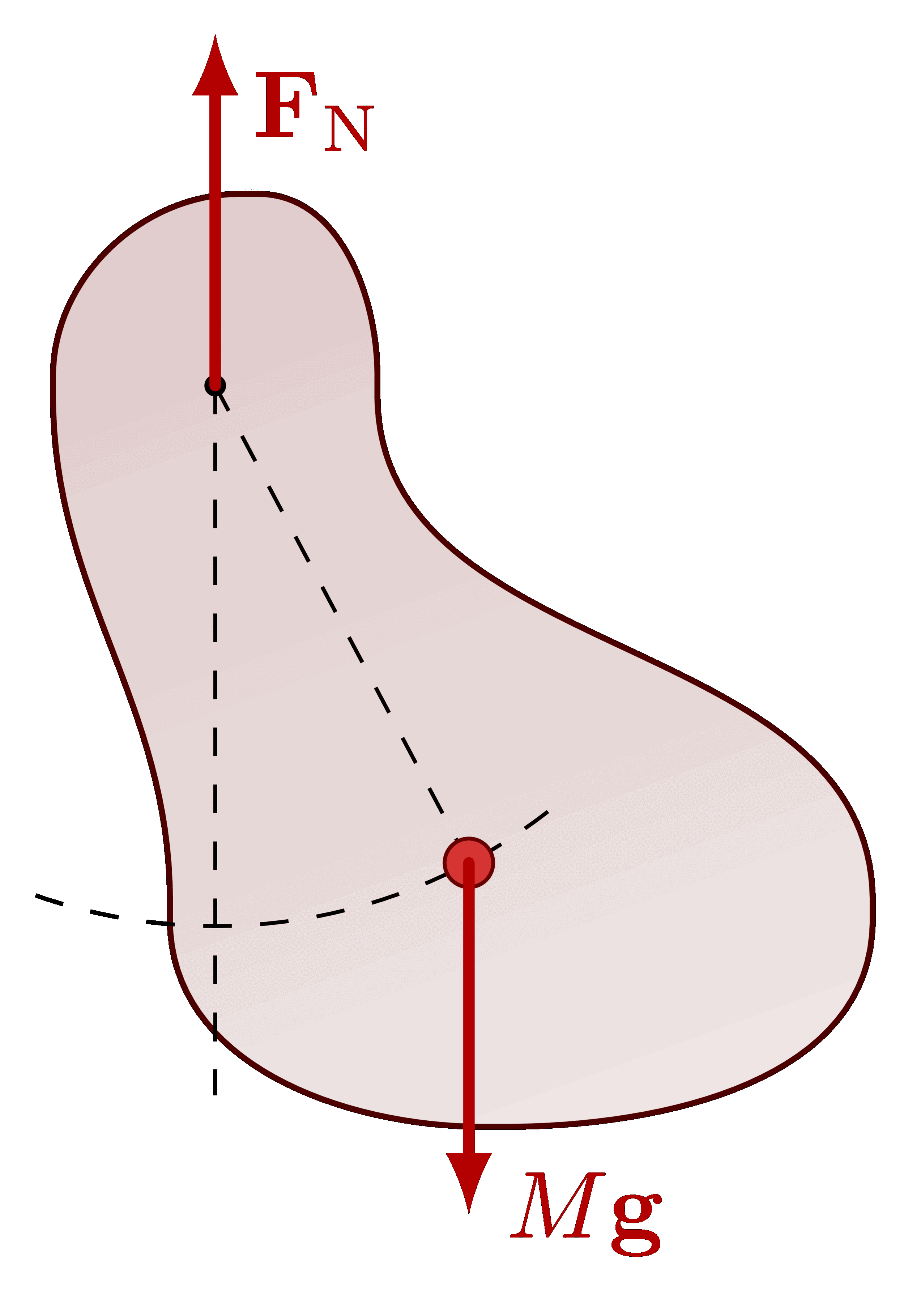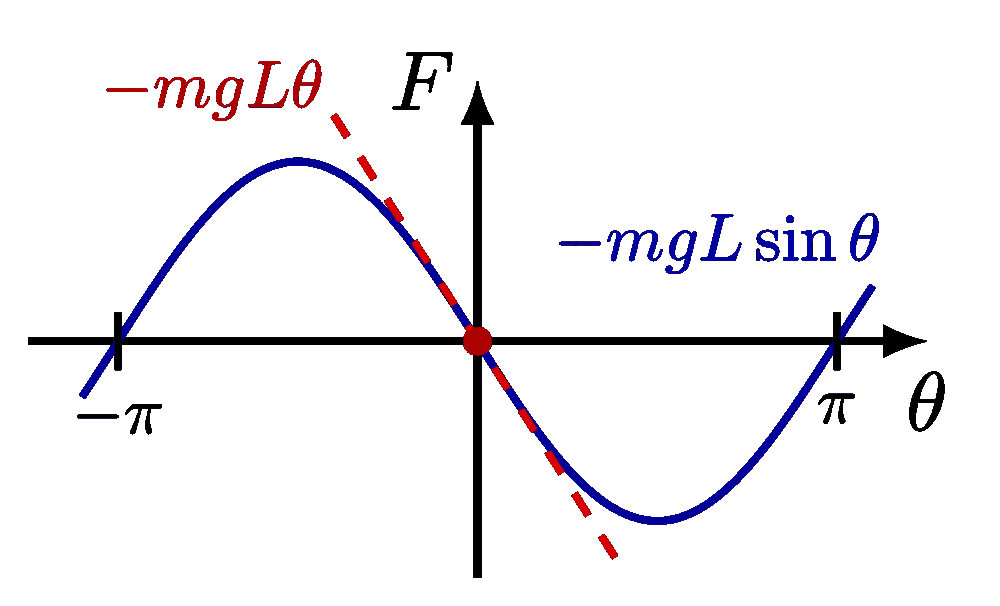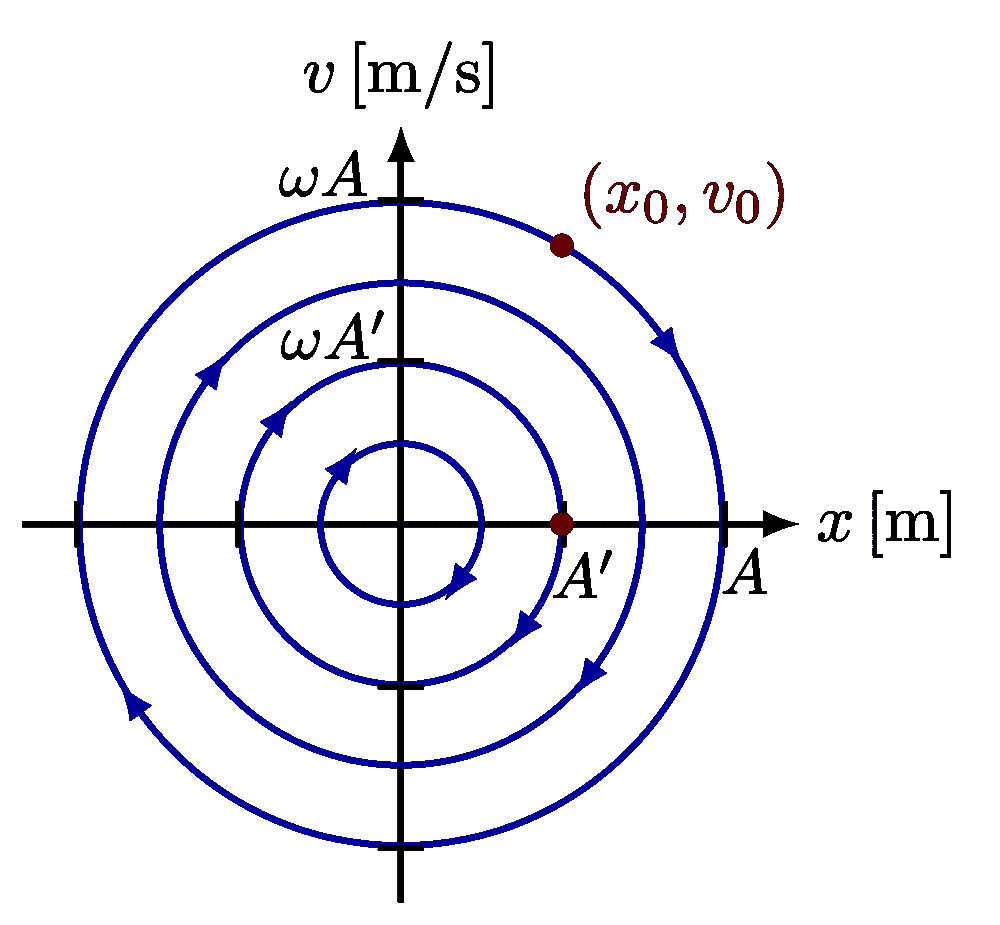Small-angle approximation of sine, cosine and tangent, and their relative error.
For more on the pendulums, please see the “pendulum” tag . For more on the small-angle approximation, please see the “Taylor expansion” tag .
Edit and compile if you like:
% Author: Izaak Neutelings (June 2020)\documentclass[border=3pt,tikz]{standalone}\usepackage{amsmath} % for \text\usepackage[outline]{contour} % glow around text\usepackage{physics}\usepackage{siunitx}\usepackage{xcolor}\usepackage{etoolbox} %ifthen\usetikzlibrary{calc}\usetikzlibrary{arrows,arrows.meta}\usetikzlibrary{decorations.markings}\usetikzlibrary{angles,quotes} % for pic (angle labels)%\usetikzlibrary{fadings}\usepackage{etoolbox} % ifthen\tikzset{>=latex} % for LaTeX arrow head\contourlength{1.6pt}\colorlet{myblue}{blue!60!black}\colorlet{myred}{red!60!black}\colorlet{mypurple}{red!50!blue!95!black!75}\colorlet{mygreen}{green!60!black}\tikzstyle{mydashed}=[black!70,dashed,thin]\tikzstyle{mymeas}=[{Latex[length=3,width=2]}-{Latex[length=3,width=2]},thin]\tikzstyle{mysmallarr}=[-{Latex[length=3,width=2]}]\tikzset{declare function={reldiff(\x,\y) = (\x-\y)/abs(\y);}}\def\tick#1#2{\draw[thick] (#1) ++ (#2:0.1) --++ (#2-180:0.2)}\begin{document}% SIN - X - TAN\def\A{2.0}\def\k{0.45} % x -> theta\def\xmax{4.2}\def\ymax{\A}\def\N{7}
Click to download: small_angle_approximation.tex • small_angle_approximation.pdf
Open in Overleaf: small_angle_approximation.tex




